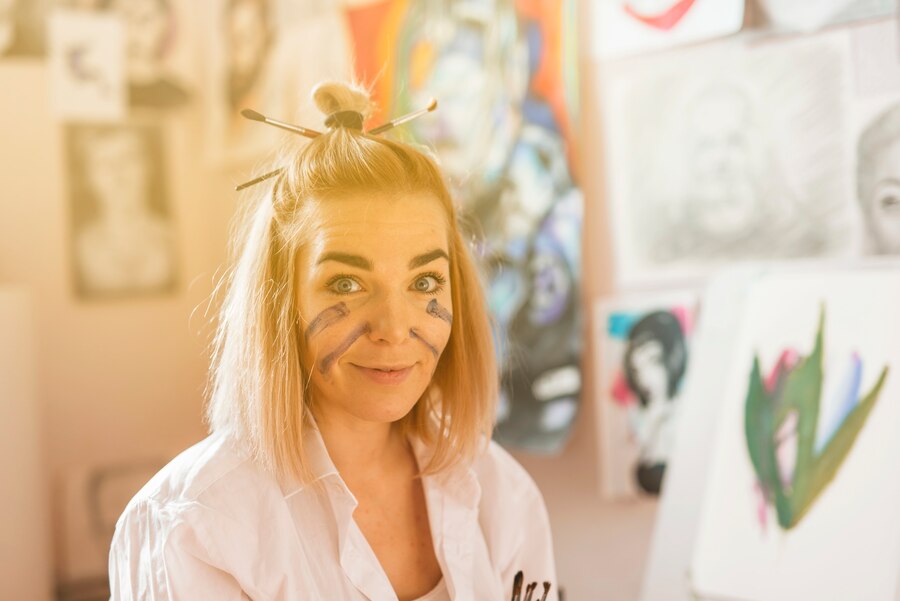
Creating realistic and lifelike portraits is a skill that requires a deep understanding of color theory, light, and shadow. One of the most challenging aspects of portrait art is accurately mixing skin tones. Skin tones are incredibly diverse and complex, varying not only from person to person but also across different lighting conditions and environments. In this comprehensive guide, we will explore tips for mixing skin tones accurately in portrait art, providing you with the knowledge and techniques needed to elevate your artwork to the next level. Whether you’re a beginner or an experienced artist, these insights will help you achieve more realistic and vibrant portraits.
Understanding the Complexity of Skin Tones
Before diving into the practical aspects of mixing skin tones, it’s essential to understand why skin tones are so complex. Human skin is not a single color; it’s a combination of various hues, including reds, yellows, blues, and even greens. The undertones of skin can be warm (yellow or red-based) or cool (blue or green-based), and these undertones play a significant role in how skin appears under different lighting conditions. For example, warm lighting can enhance the red and yellow tones in skin, while cool lighting can bring out the blue and green undertones.
To better understand the science behind skin tones, you can refer to this in-depth article by Color Matters, which explains how color theory applies to human perception. Additionally, this guide by Adobe provides valuable insights into color mixing techniques that can be applied to portrait art.
Start with a Limited Palette
One of the most effective tips for mixing skin tones accurately is to start with a limited palette. Using too many colors can lead to muddy and unnatural results. Instead, focus on a few key colors that can be mixed to create a wide range of skin tones. A basic palette for skin tones might include:
- Titanium White
- Yellow Ochre
- Cadmium Red
- Burnt Umber
- Ultramarine Blue
These colors can be mixed in various proportions to create a spectrum of skin tones. For example, mixing Yellow Ochre with a small amount of Cadmium Red and Burnt Umber can create a warm, mid-tone skin color. Adding Ultramarine Blue can help cool down the mixture for shadows or cooler undertones.
For more information on selecting the right palette, check out this guide by Winsor & Newton, which offers expert advice on color selection for portrait painting.
Observe Real-Life Skin Tones
Observation is key to mastering the art of mixing skin tones. Spend time studying real-life skin tones in different lighting conditions. Notice how light affects the highlights, mid-tones, and shadows on the skin. Pay attention to the subtle variations in color, such as the pinkish tones on the cheeks, the bluish tones around the eyes, and the yellowish tones on the forehead.
To enhance your observational skills, consider using reference photos with high-quality lighting. Websites like Unsplash and Pexels offer a vast collection of free, high-resolution portrait photos that can serve as excellent references. Additionally, this tutorial by Proko provides valuable tips on using reference photos effectively in portrait art.
Use a Color Wheel for Guidance
A color wheel is an invaluable tool for understanding how colors interact and how to mix them effectively. When mixing skin tones, the color wheel can help you identify complementary colors (colors opposite each other on the wheel) that can be used to neutralize or balance a mixture. For example, if your skin tone mixture appears too warm, adding a small amount of its complementary color (blue or green) can help cool it down.
For a detailed explanation of how to use a color wheel, visit this guide by Canva. Additionally, this article by Artists Network offers practical tips on using a color wheel for mixing paints.
Layer Your Colors
Layering is a technique that involves applying multiple thin layers of paint to build up depth and complexity in your portrait. This method is particularly useful for achieving realistic skin tones, as it allows you to gradually refine the colors and transitions between light and shadow. Start with a base layer that represents the overall skin tone, then add subsequent layers to enhance the highlights, mid-tones, and shadows.
For a step-by-step guide on layering techniques, check out this tutorial by ArtTutor. Additionally, this video by Draw Mix Paint demonstrates how to use layering to create realistic skin tones in oil painting.
Experiment with Different Mediums
Different painting mediums (oil, acrylic, watercolor, etc.) have unique properties that can affect how skin tones are mixed and applied. For example, oil paints offer a longer working time, allowing for smoother blends and transitions, while acrylics dry quickly and are ideal for layering techniques. Watercolors, on the other hand, require a more delicate approach due to their transparency.
Experimenting with different mediums can help you discover which one best suits your style and preferences. For a comprehensive comparison of painting mediums, visit this guide by Jackson’s Art. Additionally, this article by Art is Fun provides tips on mastering various painting techniques.
Pay Attention to Lighting
Lighting plays a crucial role in how skin tones appear in a portrait. The direction, intensity, and color temperature of the light source can dramatically affect the colors and shadows on the skin. For example, natural daylight tends to bring out the true colors of the skin, while artificial lighting can cast warm or cool tones depending on the bulb used.
To learn more about the impact of lighting on portrait painting, check out this guide by Creative Bloq. Additionally, this tutorial by Digital Photography School offers insights into how lighting affects color perception.
Practice, Practice, Practice
As with any skill, practice is essential for mastering the art of mixing skin tones. Set aside time to experiment with different color combinations, techniques, and mediums. Keep a sketchbook or journal to document your progress and note which mixtures work best for different skin tones. Over time, you’ll develop an intuitive understanding of how to mix and apply skin tones accurately.
For inspiration and practice exercises, visit this collection of portrait tutorials by Skillshare. Additionally, this guide by Artists Network offers a wealth of resources for improving your portrait painting skills.
Conclusion
Mixing skin tones accurately in portrait art is a challenging but rewarding endeavor. By understanding the complexity of skin tones, starting with a limited palette, observing real-life references, using a color wheel, layering your colors, experimenting with different mediums, paying attention to lighting, and practicing consistently, you can achieve more realistic and lifelike portraits. Remember, every artist’s journey is unique, so don’t be afraid to experiment and find what works best for you.
For further reading and resources, explore the links provided throughout this article. Happy painting!
